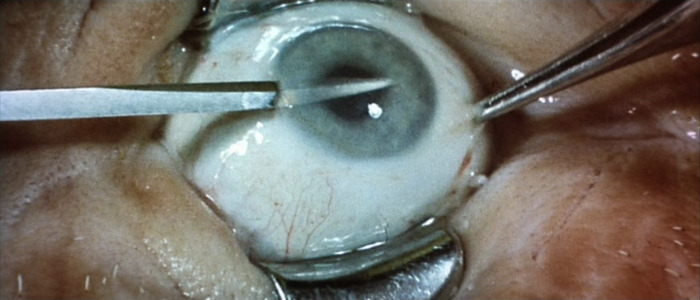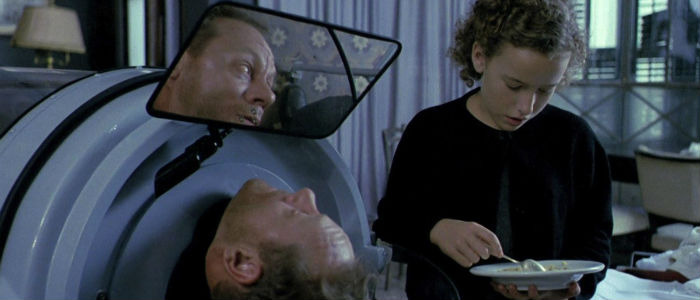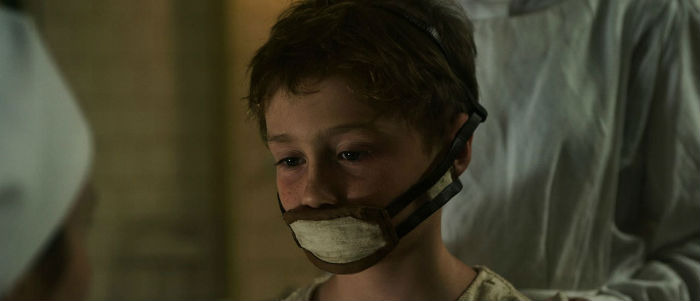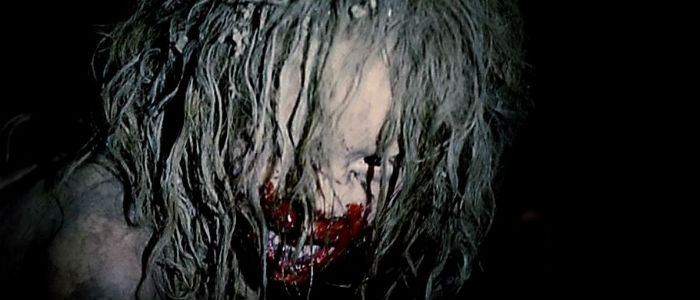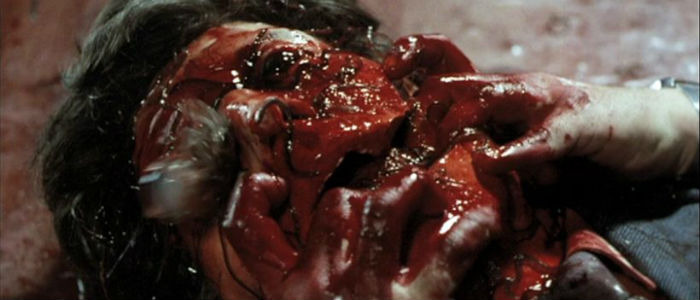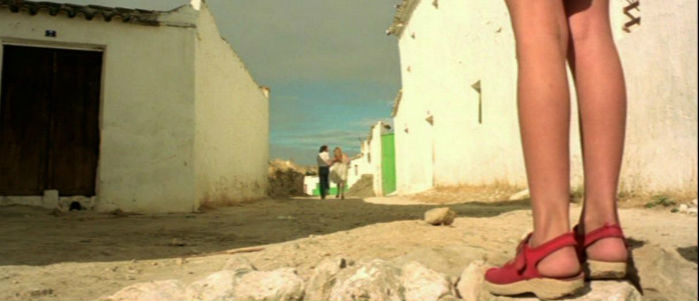The Best Spanish Horror Movies You've Never Seen
(Welcome to The Best Movies You've Never Seen, a series that takes a look at slightly more obscure, under-the-radar, or simply under-appreciated movies. In this edition, we whip out our passport and go looking for Spanish terrors deserving of more eyeballs.)
Spain is a beautiful nation filled with rich culture, wonderful people, and the abomination that is bullfighting, and like most countries, it's also home to past sins and acts of government-sanctioned barbarism. It's no surprise that Spanish (and Mexican) filmmakers often infuse their horror films and thrillers with that history, and that reflection on very real pain has resulted in some fantastically dark genre films from the grisly fun of Tombs of the Blind Dead (1972) to the emotionally scarring loneliness of The Devil's Backbone (2001). More recently, they've proven themselves capable of delivering kick-ass "zombie" films with REC (2007) and REC 2 (2009), the supernatural masterpiece that is The Orphanage (2007), and terrifying psychological horror movies including Julia's Eyes (2010), Kidnapped (2010), and Sleep Tight (2011).
In addition to being well-known, though, most genre fans have already seen those movies. (Although if you haven't, you should fix that sooner rather than later as they are all fantastic.) So in an effort to do what I do, I'm highlighting some other Spanish horror films this week that are a bit less recognizable despite being equally fantastic. All six are Spanish productions (despite two being in English), and while they lean heavily towards the horrors humans inflict upon each other, I made sure to toss in some hungry gastropods for good measure.
Keep reading for a look at some of the best Spanish horror movies you probably haven't seen.
Anguish (1987)
John is a mild-mannered optometrist's technician whose life is wholly under his mother's control. When a bad customer interaction gets him fired, he takes revenge on the woman and returns home to his disapproving mother who decides the world doesn't deserve her beautiful son. She hypnotizes him and sends him out with a simple thought – "The eyes of the city are mine." Still under his command, John heads to a theater, takes a seat in the dark theater, and begins methodically killing moviegoers one by one... and then removing their eyes.
Filmed entirely in Spain with an English-speaking cast, Anguish is a terrifying and twisted tale that was clearly well ahead of its time. What begins with the familiar – a psychopath hung up on his mother – is made wholly original here when barely a third of the way into the film something unexpected occurs. Our view pulls back to reveal that the movie we've been watching is actually a movie being screened in a moderately full theater. From there, the narrative splits ,moving viewers between the original film and what's happening in the "real" world, and yes, Scream 2's opening sequence did borrow a bit from this earlier film. There's something of a meta-commentary at play here on the power of movies, imagination, and the combustive combination of the two.
The film's terror comes in its scenes set inside the second theater. While the first feels like the movie it is thanks in part to terrific turns by the highly recognizable Michael Lerner and Zelda Rubinstein, the "real" theater sees a nightmare unfold that in today's world is no longer fictional. It delivers some tense and frightening moments, and it's guaranteed to fuel fears in the back of your mind the next time you sit down in a darkened theater.
Anguish is available on DVD from Amazon.
In a Glass Cage (1986)
Klaus misses the good old days of World War II when he was allowed to abuse, molest, and murder young boys under the cover of war and its aftermath. Years after a failed suicide attempt, he lives confined to an iron lung to assist with his breathing. He lives with his wife, daughter, and a nurse, but when a young man named Angelo sneaks in one night, Klaus insists he be allowed to stay as his new caretaker. He was a former victim of Klaus', but if you think he has a simple revenge in mind for the old Nazi, think again.
This is a hard watch at times – and by "at times" I mean from beginning to end – as it leaves viewers desperately searching for a character worth supporting. Harsh things are happening on screen both in the past (via flashbacks) and the present as Angelo's intentions make themselves clear, and if torture porn was a real thing (it isn't), this is the kind of movie some people might cite as an example. I realize none of this is selling the movie to you very well, though, so I'll add that the performances are strong and the relationship that develops between the two is compelling in its unsettling and creepy nature. The teacher becomes the student, and both cruelty and submission are on the lesson plan.
The closest comparison to this brutally draining feature is Stephen King's "Apt Pupil" which was published in 1982 and adapted into a film in 1998. As with King's tale, the theme here is that evil often passes from one generation to the next and is taught by example. It's a dark and grim truth, but writer/director Agustí Riutort shares it with beautiful and haunting visuals that bring a gothic feel to the very grounded sins being committed before our eyes. It's rare for an attractively shot film to be this ugly, but on the bright side, it's also fairly depressing.
In a Glass Cage is available on Blu-ray/DVD from Amazon and is also currently available to stream on Shudder.
Painless (2012)
As the Spanish Civil War begins, a prison-like castle is transformed into a home for curiously ill children. They're unable to feel pain, and their lack of understanding has left them labeled dangerous to themselves and others. Doctors with competing methods decide the only cure is to teach them the intricacies of physical suffering. Decades later, a doctor has a car accident and discovers he has a brain tumor requiring a bone marrow transplant from a relative, but his search for family leads to an unwelcome truth.
This tale of past sins fits in well with the historical horror films mentioned above as it explores the fears, violence, and motivations of people caught up in the iron grip of Francisco Franco's dictatorship. Fascists strike blindly against rebels who often aren't any kinder, and as World War II heats up, a Nazi officer develops an interest in the possibility of future soldiers impervious to pain. The story being told is fictional, but the core truths involving an effort to wipe out Communists by whatever means necessary are equated to the ease with which people inflict pain and death on neighbors, strangers, and children alike.
There's both sadness and thrills throughout, but the real horror of it all comes in the film's third act. The two timelines begin to connect in ways that confirm and surprise, and as the doctor gets closer to his truth scenes from the past reveal some grisly sequences and frightening set-pieces. The ending manages to be both sad and hopeful as it suggests that past mistakes can be corrected in generations to come. There's no guarantee, of course, but there's hope.
Painless is not currently available.
Shiver (2008)
Santi is a teenager with an affliction that makes sunlight dangerous for his health and his skin. With no medical cure available, his mother moves him to a small village in the overcast and forest-filled mountains. The community isn't exactly welcoming, and as a series of brutal attacks on animals and eventually people escalate, they begin to suspect the weird teen is responsible.
The mountain setting offers a natural beauty against which the horror unfolds, and it's an increasingly thrilling narrative that moves from xenophobia and paranoia to carnage and revelation. The whole village has an inherent caution against strangers, but a select few seem especially concerned and fearful. As is often the case with insular communities (in movies at least), though, there's typically far more to fear within. Secrets, lies, and sinful acts never lead to rainbows, especially when they're spilling onto the shadowy forest floor like disemboweled sheep intestines.
Santi is played by Junio Valverde who previously starred in Guillermo del Toro's The Devil's Backbone (as a character also named Santi), and he gives a compelling turn here as a boy struggling on two fronts. He's trying to fit in with his new peers, and he's forced to defend himself against accusations regarding a sickness he doesn't even understand. It's part of what makes this horror tale an equally effective coming of age story, too.
Shiver is currently available to stream on Amazon Prime.
Slugs (1988)
A small town unknowingly built on a toxic waste dump site sees the result of that decision in the arrival of mutated slugs. They're slightly larger than usual, far more carnivorous, and intent on ruining everyone's day.
As far as Jaws riffs go, this Spanish-made/American-set flick is definitely one of the goriest, goofiest, and most nudity-filled as you're likely to find. Our hero is a health inspector named Mike Brady (!) who teams up with a sanitation specialist and a British slug expert to stop the slimy, squirming onslaught, only to be shut down by the mayor and police. They go rogue in an attempt to save the town, but the deaths ramp up as slugs attack, cause explosions, and see their eggs burst from a guy's body. It's all wonderfully over the top in the blood and gore department (as evidenced by the screenshot above), and fans of Fangoria-style practical effects will not be disappointed.
Director Juan Piquer Simón is best known – and deservedly so – for the absolute slasher gem that is Pieces (1982), but while that film has playful fun with its genre tropes Slugs is played straight. It's still ridiculous and funny, but it's played seriously as a creature feature with unintentionally humorous beats landing throughout. The score is gloriously ill-fitting, the dialogue is questionable, and the upbeat ending will have you wishing they had followed it up with an equally wild adaptation of Slugs author Shaun Hutson's sequel Breeding Ground.
Slugs is available on Blu-ray/DVD from Amazon and can be rented via Amazon Video.
Who Can Kill a Child? (1976)
A British couple on vacation arrive on a small Spanish island and find only terror instead. The small village seems devoid of adults, and the children are acting more than a little strange. He grows concerned for their safety and for that of their unborn baby, and they soon realize that the only way off the island may be forcefully through the kids.
Easily the most infamous of the films on this list, this mid-70s horror classic still hasn't been seen by enough people. It's a rare sun-drenched nightmare, but while it suggests warmth and comfort, the film builds a masterful tension between the abandoned streets and buildings and the increasing numbers of odd children that ultimately casts a chill over it all. The title's question is taken seriously by these soon to be parents, and their struggle is evident all the way up to the breaking point. Kid villains in horror can be creepy, but they're often ineffective when it comes to feeling like a true threat because they're small and weak. That's not the case here as their use of numbers, shock, and cruelty give them a visible advantage.
It's the kind of film you won't see duplicated because our more enlightened times often dictate better treatment and portrayal of child characters onscreen. That didn't stop a remake called Come Out and Play from releasing in 2012, but it unsurprisingly lacks the original's increasing urgency and sense of real danger from the children. (A better update is available in 2008's The Children which lands both the threat and the ending equally well) Interestingly, Stephen King's "Children of the Corn" was published just a year after the original film was released with a fairly similar plot, but the odds are slim that he could have seen the film by that point. His murderous tykes are all of his own making.
Who Can Kill a Child? is available on Blu-ray/DVD from Amazon.

